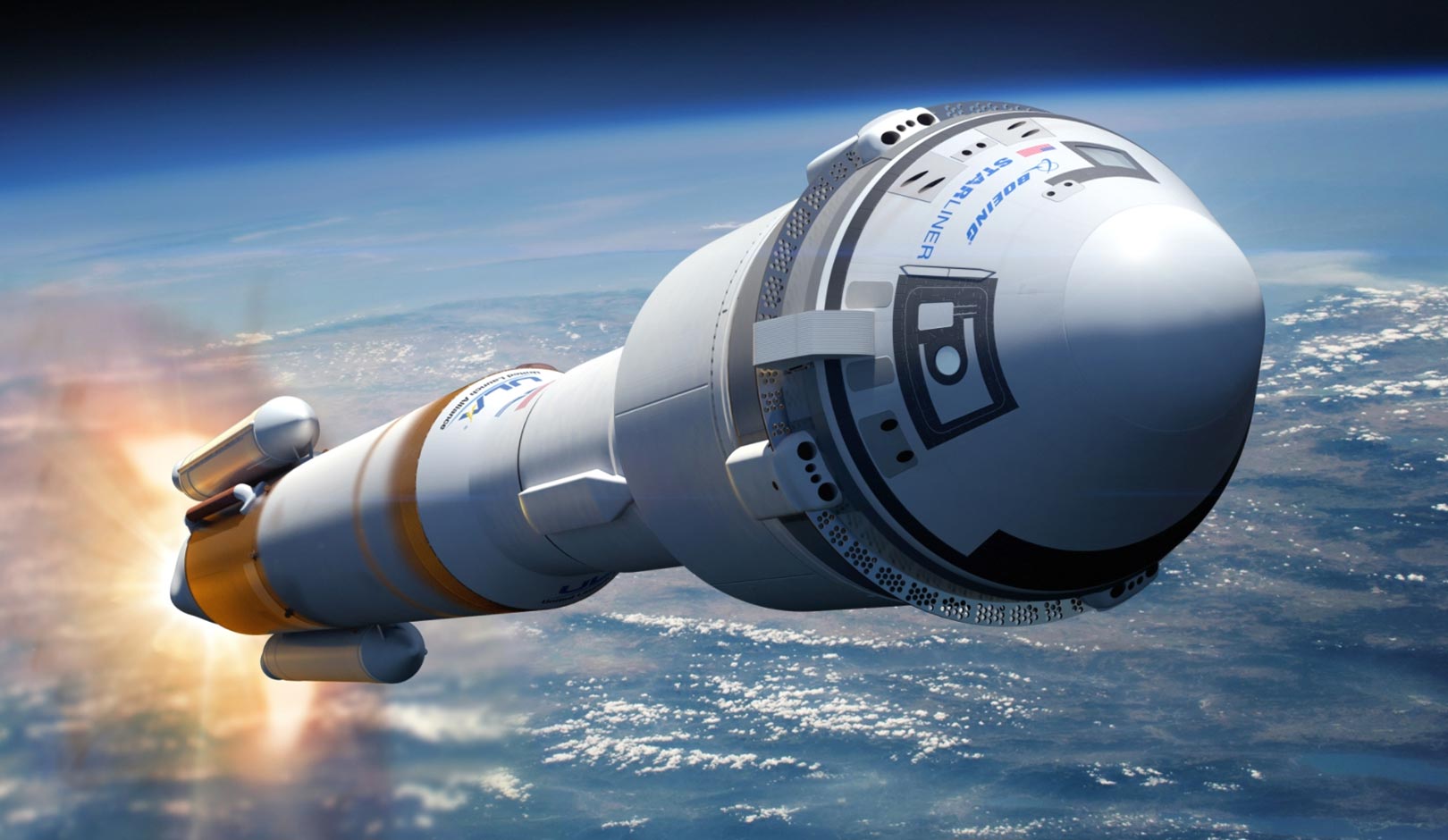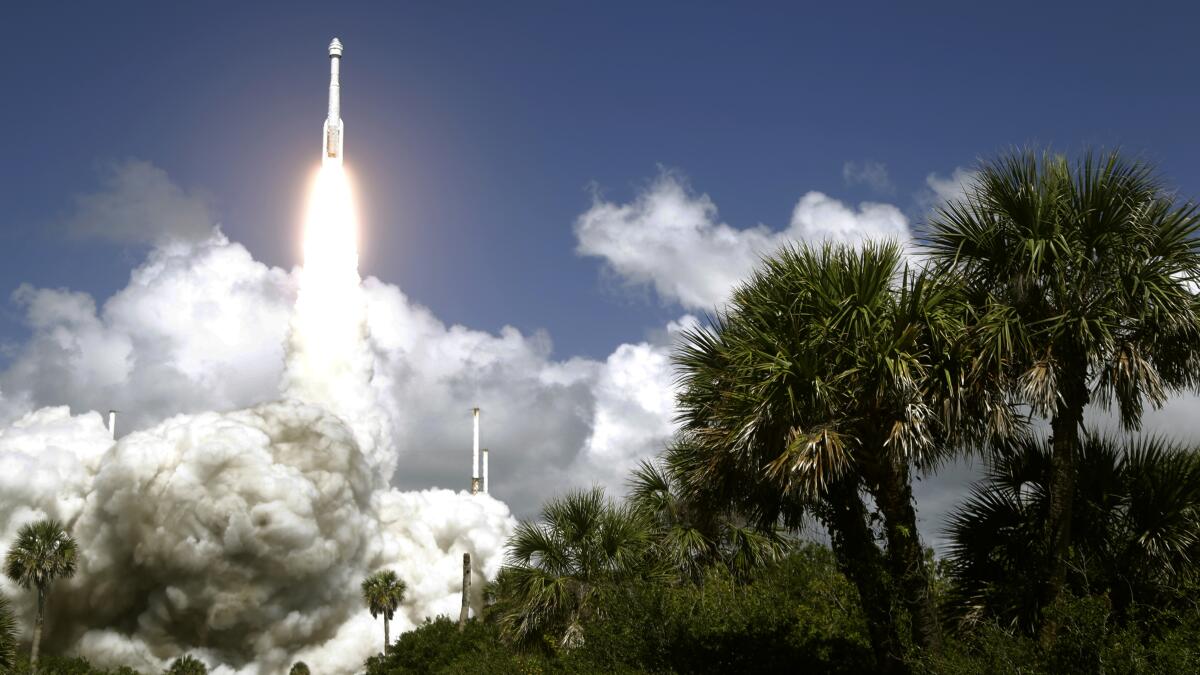NASA and Boeing Starliner Launch Overview
Nasa, boeing starliner launch – The NASA and Boeing Starliner launch is a significant milestone in the commercial crew program, marking the first crewed flight of Boeing’s Starliner spacecraft to the International Space Station (ISS). The launch, scheduled for April 2023, has undergone several delays due to technical setbacks, but remains a crucial step in NASA’s efforts to establish a sustainable and cost-effective human spaceflight system.
NASA’s recent launch of the Boeing Starliner marked a significant milestone in space exploration. The mission was particularly notable for its inclusion of Sunita Williams , a veteran astronaut with an illustrious career. Williams’ presence on the flight not only underscored the agency’s commitment to diversity and inclusion but also highlighted the pivotal role women continue to play in pushing the boundaries of human knowledge and achievement in the cosmos.
Timeline
- December 2019: Starliner’s first uncrewed flight test, OFT-1, fails to reach the ISS due to software issues.
- August 2021: OFT-2, the second uncrewed flight test, successfully docks with the ISS.
- April 2023 (planned): Crew Flight Test (CFT) with a crew of two astronauts.
Significance
The successful launch of Starliner will demonstrate the spacecraft’s ability to safely transport astronauts to and from the ISS, opening up the possibility for more frequent and affordable human spaceflight missions. It will also pave the way for the development of future commercial space stations and exploration missions.
The NASA-Boeing Starliner launch has been a highly anticipated event in the space exploration community. Once in orbit, the Starliner will rendezvous with the International Space Station , a crucial hub for scientific research and international cooperation in space. The successful launch and docking of the Starliner will mark a significant milestone in NASA’s commercial crew program, paving the way for more frequent and reliable access to the International Space Station and beyond.
Technological Advancements
The Starliner spacecraft incorporates several technological advancements, including:
- A reusable crew capsule capable of carrying up to seven astronauts.
- An advanced guidance and navigation system that uses GPS and star trackers.
- A docking system that allows for automated rendezvous and berthing with the ISS.
Technical Analysis of the Starliner Spacecraft

The Boeing Starliner spacecraft is a reusable commercial crew vehicle designed to transport astronauts to and from low Earth orbit (LEO). It is part of NASA’s Commercial Crew Program, which aims to develop and operate safe, reliable, and cost-effective human spaceflight systems. The Starliner spacecraft is a capsule-shaped vehicle that can accommodate up to seven astronauts. It is equipped with a variety of systems to support life in space, including environmental control and life support systems, power generation and distribution systems, and communications systems.
Propulsion Systems
The Starliner spacecraft is propelled by a combination of chemical rockets and thrusters. The main propulsion system consists of two Aerojet Rocketdyne RL-10B-2 engines that provide thrust for ascent and descent. The RL-10B-2 engine is a high-performance, liquid-propellant rocket engine that has been used on a variety of spacecraft, including the Centaur upper stage and the Delta IV launch vehicle. In addition to the main propulsion system, the Starliner spacecraft is also equipped with a number of smaller thrusters that are used for attitude control and maneuvering. These thrusters are powered by monopropellant hydrazine.
Life Support Systems, Nasa, boeing starliner launch
The Starliner spacecraft is equipped with a variety of life support systems to provide a safe and comfortable environment for the crew. These systems include an environmental control and life support system (ECLSS) that regulates the temperature, humidity, and oxygen levels in the cabin. The ECLSS also includes a water purification system that provides the crew with clean drinking water. In addition to the ECLSS, the Starliner spacecraft is also equipped with a waste management system that collects and disposes of human waste. The waste management system is designed to be odorless and sanitary.
Docking Mechanisms
The Starliner spacecraft is equipped with a variety of docking mechanisms that allow it to connect to other spacecraft and space stations. The primary docking mechanism is the Common Berthing Mechanism (CBM), which is a standardized docking system that is used by a variety of spacecraft, including the International Space Station (ISS). The CBM allows the Starliner spacecraft to dock to the ISS and transfer crew and cargo. In addition to the CBM, the Starliner spacecraft is also equipped with a number of other docking mechanisms, including a docking ring and a grapple fixture. These mechanisms allow the Starliner spacecraft to dock to a variety of other spacecraft, including commercial space stations and lunar landers.
Comparison to Other Commercial Crew Vehicles
The Starliner spacecraft is one of several commercial crew vehicles that are being developed under NASA’s Commercial Crew Program. Other commercial crew vehicles include the SpaceX Crew Dragon and the Sierra Nevada Corporation Dream Chaser. The Starliner spacecraft is similar to these other vehicles in terms of its capabilities and design. However, the Starliner spacecraft has some unique features that set it apart from the other vehicles. For example, the Starliner spacecraft is the only commercial crew vehicle that is equipped with a docking ring. This docking ring allows the Starliner spacecraft to dock to the ISS without the need for a robotic arm. The Starliner spacecraft is also the only commercial crew vehicle that is equipped with a waste management system that is odorless and sanitary.
Challenges and Solutions
The development and testing of the Starliner spacecraft has been a complex and challenging process. The Starliner spacecraft has experienced a number of setbacks, including a failed test flight in 2019. However, Boeing has worked to overcome these challenges and has made significant progress in the development of the Starliner spacecraft. Boeing has redesigned the Starliner spacecraft’s software and has conducted a number of successful test flights. The Starliner spacecraft is now scheduled to conduct its first crewed flight in 2023.
Impact of the Starliner Launch on the Space Industry: Nasa, Boeing Starliner Launch

The successful launch of Boeing’s Starliner spacecraft marks a significant milestone in the commercial space industry. This launch has the potential to revolutionize the way we explore and utilize space, opening up new opportunities for economic growth, job creation, and international collaboration.
Economic Benefits and Job Creation
The Starliner program has already generated substantial economic benefits. The development and production of the spacecraft has created thousands of jobs in the aerospace sector, both at Boeing and its subcontractors. The launch and operation of the Starliner will also create ongoing jobs in mission control, engineering, and other support roles.
International Cooperation
The Starliner launch is also a testament to the power of international cooperation in space exploration. The spacecraft was developed in partnership with NASA, and its launch was supported by teams from around the world. This collaboration demonstrates the growing importance of international partnerships in the space industry, as countries seek to pool their resources and expertise to achieve ambitious goals.
The launch of NASA’s Boeing Starliner spacecraft, scheduled for later this year, has been eagerly anticipated by space enthusiasts. The mission, which aims to test the spacecraft’s ability to dock with the International Space Station, is a crucial step in NASA’s plans to return humans to the Moon.
While we eagerly await the launch, we can also delve into the realm of entertainment and explore the latest reviews for the upcoming Disney+ series “Acolyte” on Rotten Tomatoes. The series, set in the Star Wars universe, promises to captivate audiences with its intriguing storyline and stellar cast.
As we prepare for both the launch of the Starliner and the premiere of “Acolyte,” we are filled with a sense of excitement and anticipation for what the future holds in both space and entertainment.
The recent launch of NASA’s Boeing Starliner spacecraft has captured the attention of space enthusiasts worldwide. As the spacecraft embarked on its mission to the International Space Station, critics and fans alike turned their attention to the latest offering from Disney+: the “Acolyte” review.
This acolyte review delved into the show’s intriguing premise, its captivating characters, and its potential to reshape the Star Wars universe. The launch of the Starliner and the release of the “Acolyte” review have both sparked excitement and anticipation, reminding us of the boundless possibilities that lie ahead in the realms of space exploration and storytelling.
The NASA and Boeing Starliner launch, scheduled for May 19th, is eagerly anticipated. Meanwhile, fans of the highly-anticipated series “The Acolyte” eagerly await its release date what time is the acolyte coming out. While we wait for both of these significant events, let’s not forget the thrilling journey that awaits us as the Starliner embarks on its mission to the International Space Station.